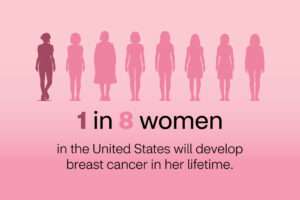
For women, breast cancer is one of the most common types of cancer they’re likely to face. One in eight women are expected to develop it in their lifetime1. Like with all cancers, screening and prevention are extremely important. Below are three reasons early breast cancer detection matters for successful treatment and better chances for survival.

Getting an early diagnosis
Regular mammograms are still the primary method to screen for breast cancer. These help to detect cancer cell clusters while they’re still small and before symptoms appear. Catching cancer early, in stages one or two, has significant benefits. Below are three reasons that make early breast cancer detection important.
-
- More treatment options. When caught early, breast cancer is highly treatable. For instance, in stage one, tumors are generally small (less than two centimeters) and localized. Treatment options often include surgery or radiation. It can also include hormone therapy, biologic targeted therapy or a combination of treatments. The most common type of surgery in an early stage is a lumpectomy. This is where doctors remove only the cancerous tissue and a small amount of surrounding healthy tissue.
- Fewer aggressive treatments. Aggressive treatments, such as chemotherapy, are rarely needed in earlier stages of breast cancer. However, chemotherapy is a more common option given in advanced stages. In addition, later stage cancer might also require a mastectomy, a full removal of the breast. For many, the downsides to aggressive treatments are the side effects. Common side effects of chemotherapy often include nausea, fatigue, hair loss, loss of appetite and lower white blood cell count (increasing risk of infection).
- Better survival rate. Early-stage cancers also have much higher survival rates. According to the American Cancer Society, the survival rate for stage one breast cancer is 99 percent2. The same is true for stage two, while the cancer remains localized. If cancer spreads to the lymph nodes, survival rates are still relatively high, at 86 percent. However, survival rates may lower significantly as cancer spreads widely in the body.
How often should you get screened?
This a common question many people ask. The answer has a lot to do with your personal risk factor and a doctor’s recommendations. For those at average risk, a mammogram is suggested every other year beginning at age 40. If you’re at higher risk, you may choose to be screened every year. Some risk factors include age, genes you carry, reproductive history and family history of breast cancer.
Your best move? Discuss breast cancer screening options with your doctor. Together, you can come up with a personal game plan to remain healthy and detect cancer early.
This article is for informational purposes only and is not meant as medical advice.
Sources
1 https://www.nationalbreastcancer.org/breast-cancer-facts/



